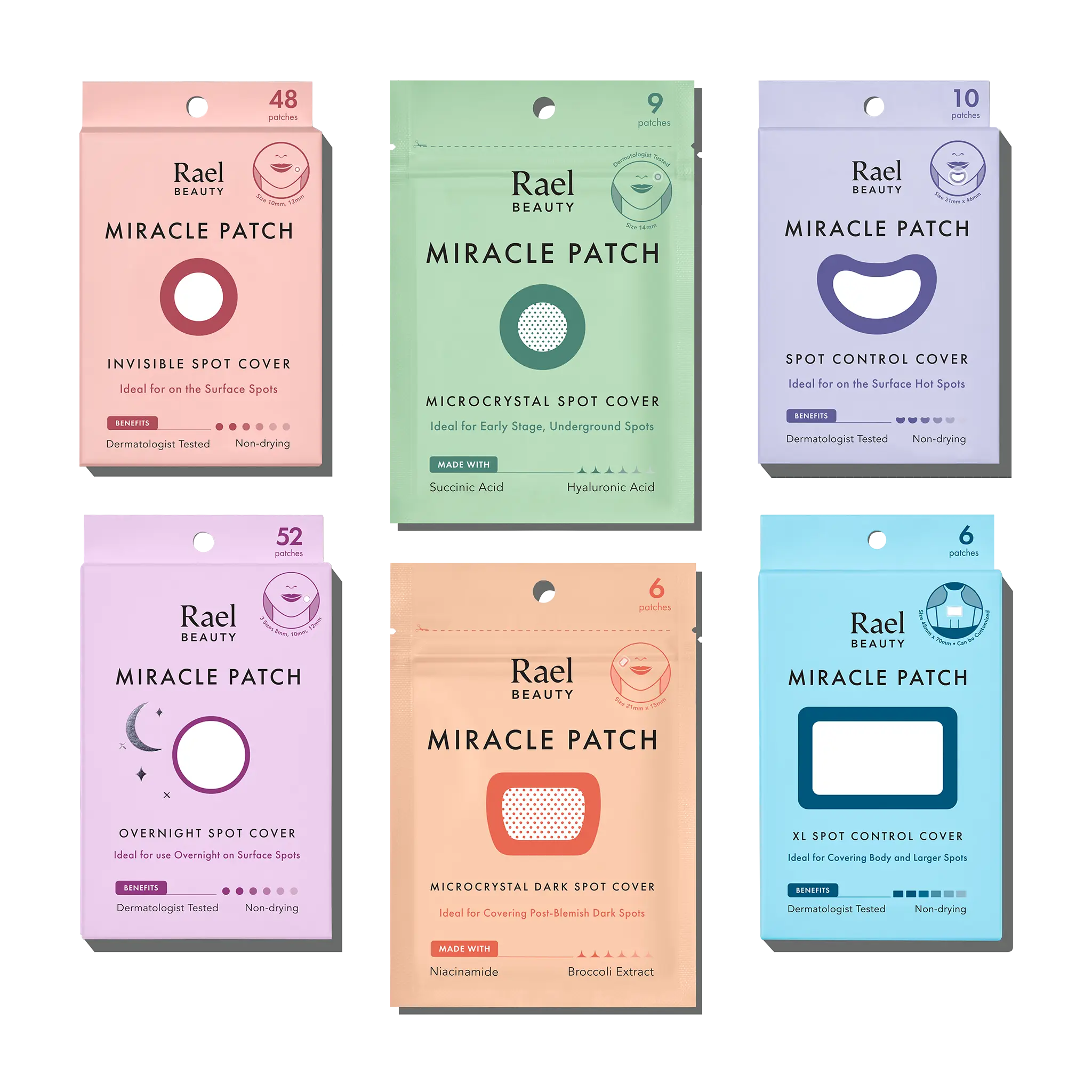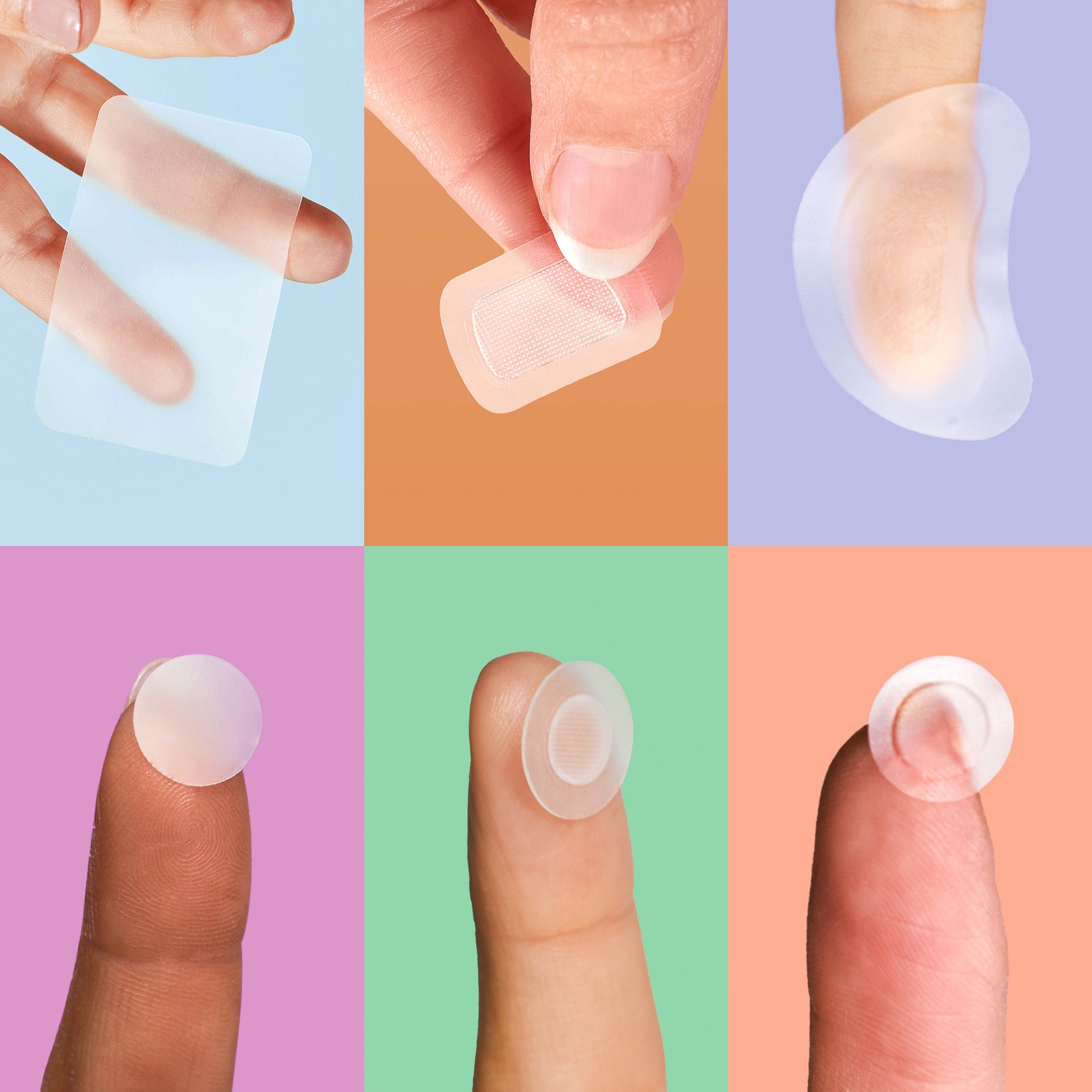Blackheads can make your skin go from glowing to gunky. No one likes the look of tiny black spots covering an area of their skin, and blackheads almost always show up in a pack instead of by themselves, usually in your t-zone (forehead, nose, and chin).
In addition to worrying about wrinkles, fine lines, texture, and balancing your skin's tone, targeting blackheads in your skincare routine is just as important.
Getting rid of blackheads isn’t easy, and squeezing and picking at them definitely isn’t the answer.
If you have tried an array of different skincare products like cleanser, pore strips, chemical peels, and toner, nothing seems to be working; there could be an underlying reason why blackheads are happening.
Let’s talk about how to deal with blackheads and get a clearer, more clarified look without harsh ingredients or acne treatments that could irritate your skin.
What Causes Blackheads?
Blackheads are a form of acne, just like whiteheads and cysts. They happen when your pores (the openings on your skin that contain hair follicles) get clogged with dirt, makeup, dead skin cells or particles, and your skin’s natural oil called sebum.
When a pimple or blackhead forms, sebum mixes with dead skin cells and dirt and fills the pore. This forms a comedone. A comedone can be opened or closed and creates a whitehead or pimple. An open comedone then becomes a blackhead.
Blackheads are open to the air, which allows the material inside them to oxygenate and turn a dark color. Blackheads can happen for several reasons.
Genetics
Your genes largely determine the way your skin behaves. Your pore size is part of your DNA, and people with larger pores tend to have more issues with overactive sebaceous glands and acne blemishes.
If your parents or siblings have blackheads or had them when they were your age, it’s no surprise you have them too. Luckily, you aren’t locked into having them for the rest of your life. We’ll cover some treatment options that can help you get rid of them, even if they’re part of your genetic code.
Hormones
We know our hormones make things interesting for us, but they also play a major role in whether or not you get blackheads and whiteheads. Hormones change a lot, especially during your monthly cycle.
Androgens trigger your skin to produce more sebum, and the sebum produced when your androgen levels are higher is thicker and stickier than the sebum your skin usually produces. That makes it easier for it to clog your pores and cause blemishes.
Androgen levels are highest just after you ovulate and in the phase of your cycle just before you start your period. If you typically get a little breakout just before you start, that’s the reason why.
Stress
Stress can trigger a hormone firestorm in your body. Stress releases the hormone cortisol, which triggers the production of more androgens. Androgens then cause your skin to produce more oil, and boom, more bumps and blemishes.
You might not be able to eliminate all the things in your life that cause you to stress, but you can learn to manage your stress and stay a little cooler under pressure, which will help your skin stay calmer and clearer.
Six Tips To Get Rid of Blackheads
You’ve got them, but how you try to get rid of them is important. If you try to pick and squeeze, you’ll probably create more problems for yourself. Here are six tips to get rid of blackheads and get skin that isn’t quite as spotty.
1. Don’t Pick!
It’s the most important tip you can follow. Popping your blackheads doesn’t work. For starters, it’s going to cause your skin to develop a response that causes swelling and possibly scabbing and scarring.
Secondly, there’s no way you’ll ever get your pore cleared out by squeezing. A clogged pore extends down deep into the pore, and you can’t squeeze or pop out everything that’s inside.
2. Make Sure They Aren’t Sebaceous Filaments
Sebaceous filaments are normal skin structures that resemble blackheads but aren’t. Sebaceous filaments are thin, hairlike structures that help move sebum to the surface of your skin to keep it moisturized and protected.
Sebaceous filaments sometimes look dark at the top of the pore, which can lead you to believe they are blackheads when they aren’t. Squeezing them is harmful to your skin and useless; they’ll just return in a day or so.
Sebaceous filaments differ from blackheads because they are:
- Lighter than blackheads in color (sometimes flesh-colored)
- Flat on the surface of your skin (not raised or swollen)
- Thin, hairlike, and flesh-colored on extraction
Use Better Skin Care
Skincare can keep your skin healthy, make sure it is hydrated, and even fight the early signs of aging. The type of skincare you use matters. Skincare products can hide harsh chemical ingredients that irritate sensitive skin and can even lead to breakouts.
Rael’s skincare is formulated with K beauty technology which keeps skin deeply hydrated, conditioned and includes soothing ingredients to work synergistically with your skin.
Cleansing your skin with gentle products helps keep your skin clean without stripping skin of natural moisture, which is essential in keeping your skin balanced and healthy.
4. Try Exfoliating
Exfoliating is a process that removes the top layer of dead skin cells from the surface of your skin. There are three different types of exfoliation; chemical, physical, and mechanical.
- Chemical exfoliation. Products that include ingredients like beta hydroxy acids, also known as “BHAs,” or alpha hydroxy acids, or “AHAs,” are chemical exfoliants. Salicylic acid, which is often found in prescription treatments, is also a chemical exfoliant.
These acids work to break the protein bonds between dead skin cells on the surface of your skin and living cells so that the dead skin cells can be sloughed away. You can use a liquid exfoliator 2-3 times a week to gently exfoliate.
When you eliminate dead skin cells, there’s less of a chance of developing a clogged pore. Both BHAs and AHAs can irritate your skin, especially if it is sensitive, so make sure to spot test the product you select to make sure your skin tolerates it.
- Physical exfoliation. Physical exfoliation uses gentle scrubbing to remove dead skin cells. Physical exfoliation can be in the form of a scrub that contains granules that gently lift away dead skin or can be done using a cloth or sponge.
It’s important to make sure the physical exfoliant you use is gentle on your skin. Too much scrubbing can damage your skin and irritate you.
- Mechanical exfoliation. Mechanical exfoliators are tools used to lift away dead skin. Microdermabrasion performed by an aesthetician or dermatologist is a type of mechanical exfoliation.
There’s usually some recovery time with mechanical exfoliation because it’s a little more invasive than other treatments. You might have red, irritated skin for a few days post-treatment.
Exfoliating helps keep your skin clear from dead skin cells and a brighter, more youthful complexion, which can help keep your skin clearer and healthier and help you get rid of blackheads.
5. Use a Mask
Masks help dig deep into your pores to clear out impurities. Think of using a mask like clearing out your pores without having to squeeze or pick at them. Charcoal masks and clay masks are popular for acne-prone skin, but they also involve a skin purge that can leave you with more bumps and blemishes.
Masks can also help keep your skin clarified and hydrated, which means your sebaceous glands don’t have to produce as much oil, potentially clog pores. Rael’s sheet masks are perfect for keeping your skin calm and hydrated and keeping your pores clean and clear.
Try using our masks when you’ve got the urge to get in the mirror and stare at blemishes. Cover them with a mask and de-stress for fifteen minutes instead. Your skin (and your mental health) will thank you.
6. Use A Spot Cover
Spot covers are clear patches designed to cover a large area of bumps and blemishes. They work using hydrocolloid technology, which keeps wounds protected while they heal. Spot covers gently pull out pus, dirt, and oil, leaving you with clearer, more clarified skin. It’s like hitting the delete button on your blemishes.
Rael’s Spot Control Cover is designed for blemish hot spots. Larger areas of blackheads are no problem, just place a spot control cover over the area and get back to your life. Your blemishes will be protected from your fingers (so you can’t pick or squeeze), and when you remove the patch, your blackheads will be virtually invisible.
Get Rael
Blackheads can make you mad, but you don’t have to sit back and let them ruin your day. Be proactive in the fight against blackheads with powerfully effective products from Rael. Our skincare products work to keep your skin looking radiant without the use of irritating chemicals that could make your skin more uncomfortable or cause more breakouts.
Step away from the mirror and grab your favorite Rael masks and spot covers. It’s just a few little blackheads; you’ve got this!
Sources:
How to treat different types of acne | American Academy of Dermatology.org









